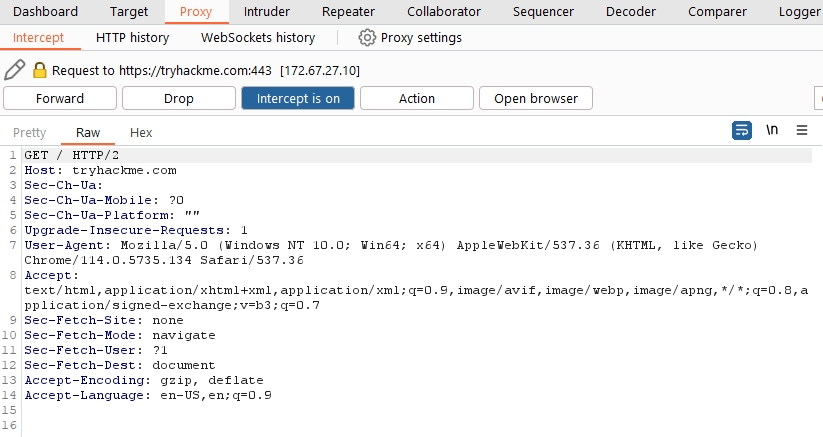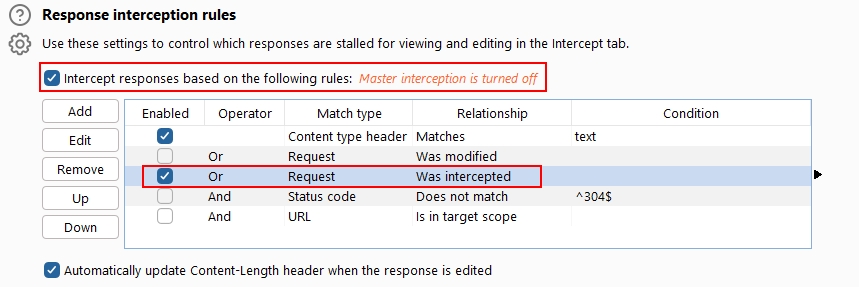Proxy
Key Points to Understand About the Burp Proxy
Intercepting Requests: When requests are made through the Burp Proxy, they are intercepted and held back from reaching the target server. The requests appear in the Proxy tab, allowing for further actions such as forwarding, dropping, editing, or sending them to other Burp modules. To disable the intercept and allow requests to pass through the proxy without interruption, click the
Intercept is onbutton.
Taking Control: The ability to intercept requests empowers testers to gain complete control over web traffic, making it invaluable for testing web applications.
Capture and Logging: Burp Suite captures and logs requests made through the proxy by default, even when the interception is turned off. This logging functionality can be helpful for later analysis and review of prior requests.
WebSocket Support: Burp Suite also captures and logs WebSocket communication, providing additional assistance when analysing web applications.
Logs and History: The captured requests can be viewed in the HTTP history and WebSockets history sub-tabs, allowing for retrospective analysis and sending the requests to other Burp modules as needed.

Proxy-specific options can be accessed by clicking the Proxy settings button. These options provide extensive control over the Proxy’s behaviour and functionality.
Some Notable Features in the Proxy Settings
Response Interception: By default, the proxy does not intercept server responses unless explicitly requested on a per-request basis. The "Intercept responses based on the following rules" checkbox, along with the defined rules, allows for a more flexible response interception.

Match and Replace: The "Match and Replace" section in the Proxy settings enables the use of regular expressions (regex) to modify incoming and outgoing requests. This feature allows for dynamic changes, such as modifying the user agent or manipulating cookies.
in order to intercept packets from our browser we nee
Last updated